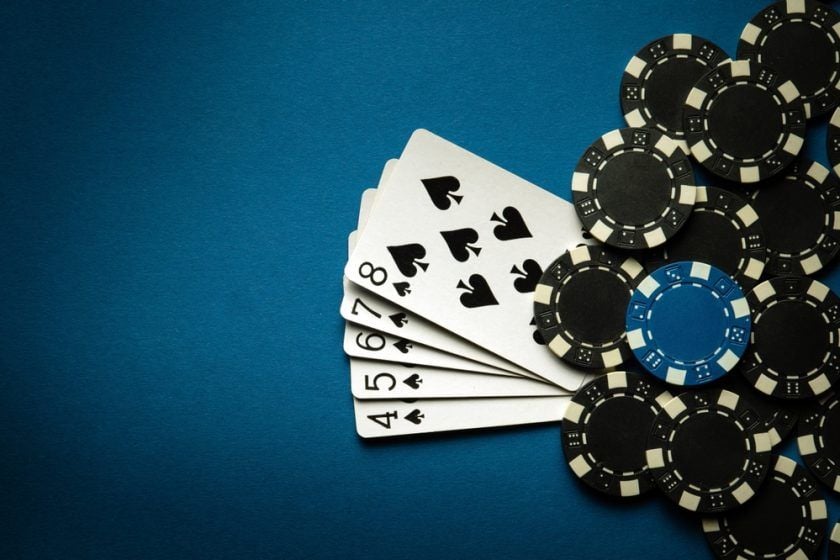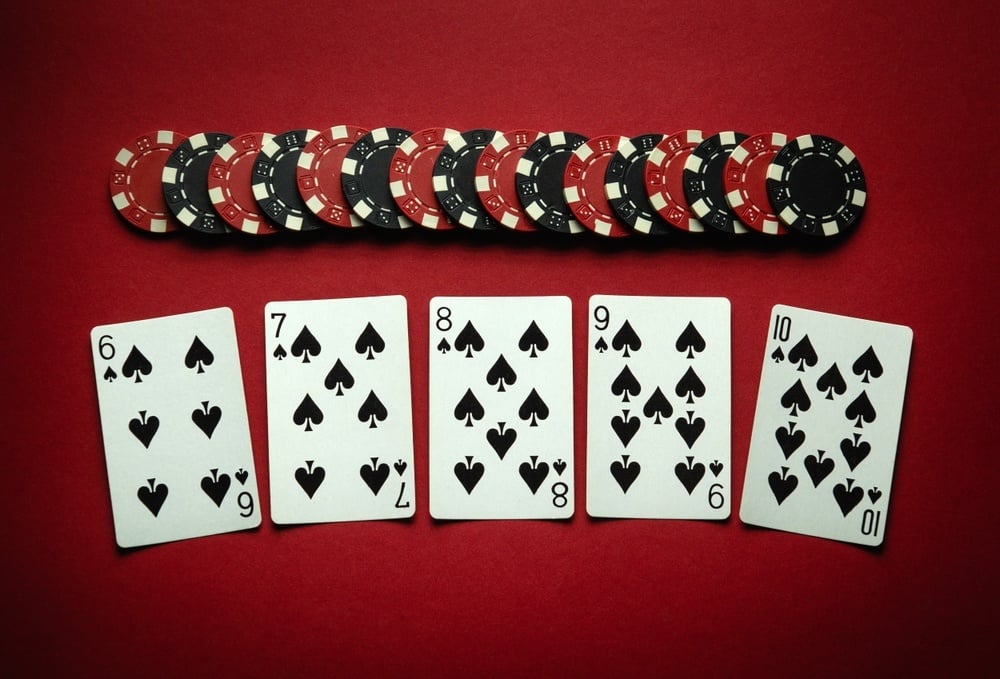Gutshot in Poker: Understanding the Draw and How to Play It

Essential Insights on the Gutshot Draw in Poker
A gutshot-also called an inside straight draw or belly buster-in poker refers to having four outs to a straight, where the missing card is somewhere in the middle rather than at the ends. This hand scenario is considered one of the weakest straight draws due to its low odds of improvement and limited possibilities for making the hand.
- A gutshot requires a single, specific card from four possible options to complete a straight.
- It’s less likely to hit compared to open-ended straight draws, which have eight outs.
- Betting or calling with a gutshot is risky, and should be supported by favorable pot odds or additional advantages like fold equity.
- Players often overvalue this hand, leading to costly mistakes.
- Evaluating factors like pot odds, implied odds, table position, and opponent behavior is vital for determining whether to pursue this draw.
While a gutshot draw is a relatively weak holding, savvy play and a sound understanding of poker strategy can turn it into a profitable opportunity in certain scenarios.
Defining the Gutshot Draw: What Sets It Apart?
A gutshot straight draw is when a player can complete a straight by drawing just one specific rank-there are only four cards in the deck that can make the straight. For instance, on a board of 3♠ 4♦ Q♦, a player with 6♥ 7♥ holds a gutshot and needs a 5 to finish the straight.
Another example: holding K♠ Q♠ on a 9♥ 3♥ 5♣ board requires a single Jack (J) to complete the straight-a classic gutshot scenario.
It’s important to recognize gutshots during play and identify which turn and river cards could complete them. Many beginners miss these chances or fail to protect against opponents with gutshot draws, leading to unnecessary losses.
Clarifying Double Gutshot Draws
Though double gutshots are not the focus here, it’s helpful to understand that these draws offer eight outs-just like open-ended straight draws. If you hold 6♣ 9♣ on a 5♥ 7♥ 3♣ board, drawing either a 4 or 8 will complete your straight, providing twice as many opportunities compared to a standard gutshot.
Beginners should train themselves to spot double gutshots and open-ended draws for improved decision-making at the table.
The Challenges of Playing Gutshots
Gutshots are among the lowest-value draws in poker. The odds of hitting your draw from the flop to the turn are only around 8.5%, and the chances of pounding one of your four outs by the river are about 16.5%. These slim probabilities mean chasing gutshots without careful calculation can bleed your stack.
A good rule of thumb: avoid calling large bets (over 50% of the pot) when you’re holding only a gutshot with no additional draw or plan for aggression. Fold and look for better opportunities instead of chasing low-percentage hands.
Gutshot Draws Compared to Other Poker Hands
Many beginners overvalue gutshot draws due to the excitement of a potential straight. However, the odds are far lower than for other common draws:
- An open-ended straight draw: completes nearly 32% of the time by the river.
- A flush draw: about 35% chance to complete by the river.
Some hands, like flush draws, come with added “backup” equity-such as the chance to make a top pair. Gutshots typically lack this, and even making a top pair can be dangerous since the same card might also complete your opponent’s draw.
For example, if you have 7♣ 8♣ and the board shows 4♣ 6♥ J♥, an 8 on the turn gives you top pair, but also opens up a straight for anyone holding 5-7.

Image credit: VITALII BORKOVSKYI/Shutterstock
Strategic Approaches: How to Play Gutshot Straight Draws Wisely
While gutshots usually warrant a conservative approach, they can be leveraged in a broader tactical context. When you encounter a gutshot draw, always weigh the following:
- Are you in position or acting first?
- Is your only hope to win by making the straight?
- Can hitting your straight yield more profit from opponents?
- Does the texture of the board warrant aggression or caution?
Staying out of trouble with marginal hands means folding out of position against reasonable bets or using the draw as an opportunity to semi-bluff under the right circumstances. In position, consider calling and planning to take control later if your opponent shows weakness.
Position Matters: When to Fold or Get Aggressive
If you’re out of position, calling with a gutshot is rarely profitable. However, in certain dynamics-such as defending the big blind versus a late-position opener-gutshots can be valuable bluffing candidates. For example, after facing a raise from the hijack and calling from the big blind with 7♠ 8♠ on a 4♥ 5♣ 9♦ board, you might execute a check-raise bluff, representing strong hands that are more likely in your range.
Remember:
- Don’t overuse the check-raise bluff with every gutshot; balance is key.
- When in position, it’s often safer to just call and see what the turn brings.
- Be ready to seize the initiative if your opponent checks to you on later streets.

Image credit: VITALII BORKOVSKYI/Shutterstock
Common Pitfalls When Playing Gutshot Draws
Avoiding costly errors begins with recognizing the situations in which gutshot draws get players into trouble:
- Calling large bets, especially without position
- Committing too many chips with draws that cannot produce the highest possible straight (“non-nut” draws)
- Persisting in the hand after missing your draw and pairing up instead
- Bluffing against short-stacked opponents who are unlikely to fold
- Missing value opportunities when the gutshot does land
Every hand and circumstance is unique. Don’t fall into autopilot-structure your play to maximize value and minimize risk.
Advanced Tactics for Gutshot Straight Draws
Experienced players integrate gutshot strategy into their entire game plan. Before taking action, consider how future cards could change the strength of your hand and the credibility of your bets.
For example, holding a gutshot on a 4♠ 5♠ J♦ board: if the turn brings a 4 or 5, you can credibly represent trips or two pair. Use situations like this to apply pressure or take the betting lead, rather than relying strictly on drawing the perfect card.
Reading Opponents: Tailoring Your Approach
Adjusting your strategy according to the tendencies of your opponents is pivotal. If you know your opponent is unlikely to fold, focus on hands with higher implied value, only chasing draws that stand to gain when completed. Against tight or cautious players, aggressive semi-bluffing can be more effective.
Adapt your play as you gather information. Strategic flexibility and player-specific reads can dramatically improve your results with gutshot draws.

Image credit: VITALII BORKOVSKYI/Shutterstock
Real-World Gutshot Scenarios: Hand Analysis
Examining actual hands underscores how gutshot straight draws operate in live play. Consider this illustrative example:
- A player raises pre-flop in the hijack seat with A♣ 2♣; both the button and big blind call. The flop comes 7♦ 4♥ 3♣, presenting a gutshot and a potential backdoor flush.
- After a check from the big blind, a continuation bet is made and the button calls. The turn-the 9♣-brings a flush draw into play, enhancing the hand's potential.
- Another bet is made on the turn and again called. The river, Q♣, completes the flush. A large river bet maximizes value, leveraging the unlikely made hand.
This hand not only demonstrates using aggression at each stage but also highlights how having “backdoor” draws with your gutshot improves the playability of your hand. Weak gutshot-only holdings should be played far more cautiously, as they offer fewer paths to victory.
How to Improve Your Gutshot Poker Strategy
To make the most of gutshot draws:
- Run hand simulations and review statistical outcomes to build intuition for board textures and betting patterns.
- Learn from more experienced players; discuss hand histories and solicit feedback.
- Refine your judgment of when to bluff versus when to call, developing discipline in marginal spots.
Continuous practice-especially using hand history review tools and free online games-helps reinforce strategic concepts and eliminates costly errors.
Mastering Gutshot Draws: A Path to Stronger Poker Play
Gutshot straight draws are often misunderstood and misplayed, especially by new players who fail to appreciate the inherent risks. By understanding the odds, implementing discipline, and adjusting your approach based on your opponents, you can turn these tricky hands into occasional weapons in your poker arsenal.
Keep developing your game by practicing online, studying various hand situations, and exploring poker training tools. Building solid decision-making skills with gutshot draws will put you ahead of the competition and help protect your bankroll from avoidable losses.













